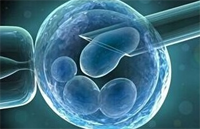Project aims to shed light on birth defects
By Zhou Wenting in Shanghai (chinadaily.com.cn) Updated: 2016-10-11 13:50The first national research project aimed at uncovering the internal and external causes of birth defects and ultimately establishing standard ways to carry out screening and diagnose molecule levels was officially launched on Monday.
It means that research on key causes and methods of early intervention relating to birth defects, including congenital heart disease, cleft lip or palate, neural tube defects and mental deficiency, is expected to make major breakthroughs by the time the project is concluded in five years, said Huang Guoying, president of the Children's Hospital at Fudan University in Shanghai, which is leading the project.
China has a high incidence of birth defects, and about 70 percent of the more than 80 million disabled people in the country are born with birth defects, Huang said.
"The prevention and treatment of birth defects are now more crucial after the implementation of the universal two-child policy," he added.
Huang said the main goals of the project include establishing a database of patients with the most common birth defects, clarifying the mechanism and process of how the defects develop, and discovering at least eight genetic locations that determine the expression of the diseases.
- China to optimize use of villa construction land
- 22 dead in building collapse
- Pollutants under alert levels after East China pharmaceutical factory
- More than 20 buried under collapsed buildings in Wenzhou
- China to end control of salt prices in 2017: NDRC
- Scenic spots ranked for their holiday services
- Illness raises risk of vanishing
- National railway corp gets new GM
- Police unveil progress of unlicensed GM corn seeds
- China pledges to streamline administrative approval











